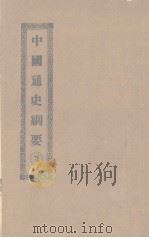《中国通史纲要:英文》
| 作者 | 白寿彝主编;杨钊,方龄贵,龚书铎等分纂 编者 |
|---|---|
| 出版 | 北京:外文出版社 |
| 参考页数 | 565 |
| 出版时间 | 1982(求助前请核对) 目录预览 |
| ISBN号 | 0835110001 — 求助条款 |
| PDF编号 | 8933548(仅供预览,未存储实际文件) |
| 求助格式 | 扫描PDF(若分多册发行,每次仅能受理1册) |
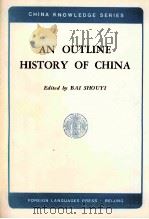
Chapter ⅠIntroduction1
1.A Land of 9,600,000 Square Kilometres1
2.Fifty-five Nationalities and a Population of Nearly 1,000,000,0009
3.1,700,000 Years and 3,600 Years17
Chapter ⅡTraces of Remote Antiquity30
1.From Yuanmou Man to Peking Man;the Making of Tools and the Use of Fire30
2.Dingcun(Tingtsun)Man and Upper Cave Man;the Improvement of Tools and the Emergence of Ornaments34
3.The Yangshao Culture and Its Matriarchal Communes38
4.The Patriarchal Clan Society of the Longshan Culture43
Chapter ⅢMyth and Legend52
1.The Legends of Ancient Tribes52
2.Tribal Chiefs,Gods and Their Sons54
3.The Hereditary Monarchy of the Xia Dynasty57
Chapter ⅣThe Slave State of the Shang and Zhou Dynasties62
1.The Earliest Written History62
2.The Slave-Owning Shang Dynasty67
3.The Social Economy of the Shang Dynasty71
4.The Rise of the Zhou and the Establishment of the Slave-Owning Zhou Dynasty76
5.Economic Development Under Zhou Slavery83
6.The Zhou Dynasty from Prosperity to Decline86
Chapter ⅤThe Early Eastern Zhou,Spring and Autumn,and Warring States Periods:Transition from Slavery to Feudalism89
1.The Early Eastern Zhou and the Spring and Autumn Period:Contention for Supremacy Among the Major States89
2.The Seven Powers of the Warring States Period95
3.The Transition from Slavery to Feudalism101
4.Confucius,Mo Zi,Other Thinkers and the Elegies of Chu109
Chapter ⅥThe Qin and Han Dynasties:the Growth of Feudal Society123
1.The Qin,China's First Feudal Dynasty123
2.Peasant Uprisings in the Late Qin Dynasty127
3.Establishment and Consolidation of the Western Han Dynasty132
4.Golden Age of the Western Han Dynasty138
5.Decline of the Western Han Dynasty;Uprisings of the Green Woodsmen and Red Eyebrows145
6.The Establishment of the Eastern Han Dynasty,the Prolcnged Turbulence,and the Yellow Turban Uprising153
7.The Development of Social Productive Forces162
8.The Growth of Feudal Relations168
Chapter ⅦThe Three Kingdoms,the Jin,the Southern and Northern Dynasties,the Sui and the Tang:the Earlier Period of Ascendancy of Chinese Feudalism174
1.The Three Kingdoms174
2.The Western Jin,the Eastern Jin and the Sixteen States180
3.The Southern and Northern Dynasties190
4.The Establishment of the Sui Dynasty and the Peasant Uprisings in Its Closing Years202
5.The Golden Age of the Tang209
6.Turmoil in the Mid-Tang Period221
7.The Decline of the Tang Empire and the Late-Tang Peasant Uprisings230
8.The Development of Social Productive Forces238
9.The Development of Feudal Relations and the Feudal-ization of Regions Inhabited by Several Nationalities247
Chapter ⅧThe Five Dynasties,the Song and the Yuan:the Later Period of Ascendancy of Chinese Feudalism256
1.The Five Dynasties and Ten States256
2.Rise and Fall of the Northern Song;Uprisings by Wang Xiaobo and Fang La264
3.The Liao,the Xia and the Jin:Their Relations with the Northern Song273
4.Rival Regimes of the Song and the Jin;Uprisings by Zhong Xiang,Yang Yao and the Red Jackets279
5.The Rise of the Mongols and the Fall of the Xia,the Jin and the Southern Song288
6.Founding of the Yuan Dynasty and Peasant Uprisings During the Late Yuan296
7.Further Growth of Social Productivity;Southward Shift of Economic Development306
8.Further Development of Feudal Relations;Feudalization of the Border Regions313
9.China's Communications with the Outside World320
Chapter ⅨThe Ming-Qing Period:the Twilight of Feudalism327
1.Establishment of the Ming Dynasty327
2.Decline of the Ming Dynasty;Refugee and Miner Uprisings338
3.Decay of the Ming Dynasty;Peasant Uprisings Continued344
4.Rise of the Manchus;Peasant Uprisings Towards the End of the Ming;Fall of the Ming Dynasty356
5.Peasant Regime of the Great Shun;Princes of the Southern Ming;Unification Activities During the Early Qing Dynasty374
6.Qing Rule Strengthened385
7.Decline of the Qing;Uprisings of Different Nationalities397
8.The Decline of Feudalism and the Emergence of Sprouts of Capitalism406
9.Arrival of Western Colonialism420
Chapter ⅩSemi-Colonial and Semi-Feudal Society;The Old Democratic Revolution431
1.The Opium War431
2.The Taiping Peasant War436
3.The Second Opium War;Russia's Occupation of Chinese Territory443
4.The Later Period of the Taiping Peasant War448
5.Culture and Learning After the Opium War453
6.Foreign Economic Aggression and the Official"Westernization"Drive457
7.The Proletariat and the National Bourgeoisie in the Early Days;The Spread of Modern Western Science460
8.Foreign Aggression and China's Border Crises465
9.The Sino-Japanese War and Imperialist Partition of China470
10.The Modernization Movement of the Bourgeois Reformists475
11.The Anti-Imperialist Patriotic Movement of the Yi He Tuan483
12.The Rise of the Bourgeois Revolutionary Movement489
13.The Founding of the Tong Meng Hui495
14.The Wuchang Uprising;The Founding of the Republic of China and the Fall of the Qing Dynasty500
15.The Period of Beiyang Warlord Rule507
16.Ideology and Culture During the Period of Bourgeois Revolution513
17.The Dawn of the Chinese Revolution521
ABOUT THE EDITOR529
INDEX531
1982《中国通史纲要:英文》由于是年代较久的资料都绝版了,几乎不可能购买到实物。如果大家为了学习确实需要,可向博主求助其电子版PDF文件(由白寿彝主编;杨钊,方龄贵,龚书铎等分纂 1982 北京:外文出版社 出版的版本) 。对合法合规的求助,我会当即受理并将下载地址发送给你。
高度相关资料
-

- 中国通史纲要 上
- 1971 台湾商务印书馆股份有限公司
-

- 中国通史纲要
- 1980
-

- 中国通史纲要
- 1989 外文出版社
-

- 新编中国通史纲要
- 1987 长春:吉林文史出版社
-

- 中国文学史纲要
- 1983 北京:北京大学出版社
-
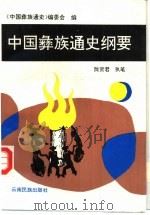
- 中国彝族通史纲要
- 1993 昆明:云南民族出版社
-
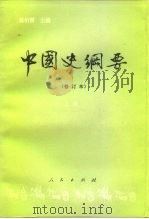
- 中国史纲要
- 1995 北京:人民出版社
-
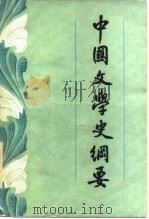
- 中国文学史纲要
- 1984 西宁:青海人民出版社
-
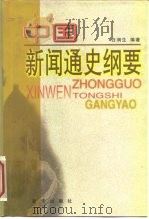
- 中国新闻通史纲要
- 1998 北京:新华出版社
-
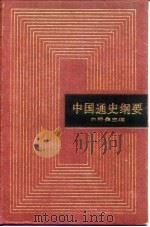
- 中国通史纲要
- 1980 上海:上海人民出版社
-
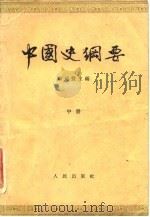
- 中国史纲要 中
- 1963 北京:人民出版社
-
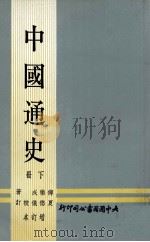
- 中国通史 下 增订本
- 1972 大中国图书公司
-
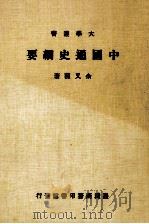
- 中国通史纲要
- 1980 台湾商务印书馆股份有限公司
提示:百度云已更名为百度网盘(百度盘),天翼云盘、微盘下载地址……暂未提供。➥ PDF文字可复制化或转WORD
